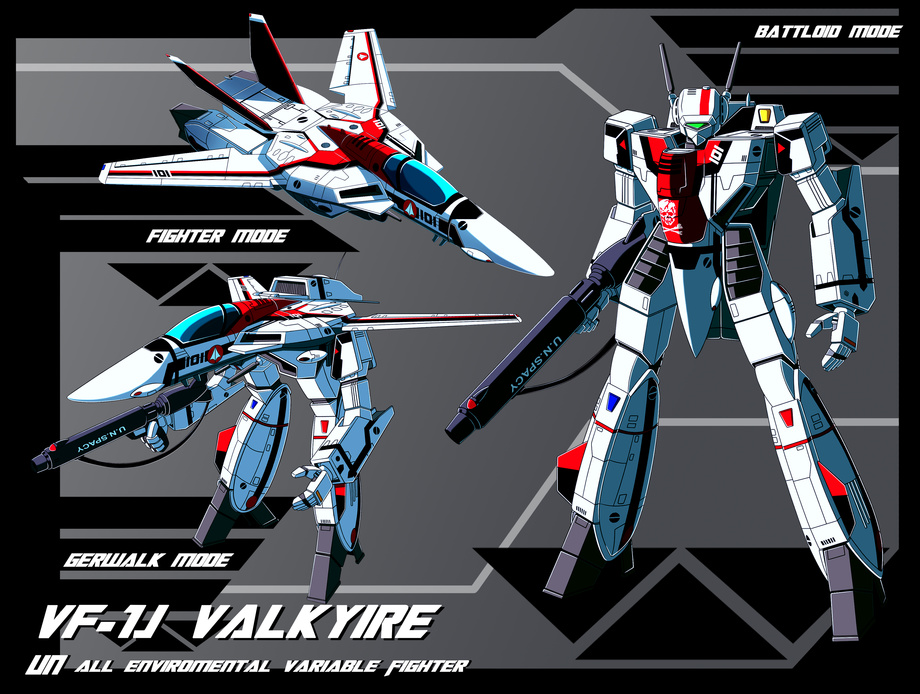fter the crash-landing of the Alien StarShip-One in July 1999 it is discovered the alien crew was a race of giants some five times the size of a human. Fearful of being unprepared for a conflict with these aliens, the newly formed United Nations Government (UNG) begins researching anti-giant weapon systems technologies. Utilizing the now named OverTechnology found on the ASS-1, the non-variable humanoid mecha called the Destroid is designed; another weapon system is the transformable Battroid. The UNG contracts Stonewell and Bellcom to develop an all-environment variable fighter eventually known as the "Valkyrie." Rising to the challenge, Stonewell and Bellcom subcontract with OT reaction powerplant producer Shinnakasu Heavy Industry and Destroid developer Centinental to complete a basic design by 2005. The first transformable prototype is successfully tested in 2007 and the UNG decides to formally adopt the Valkyrie in November of that year. By late 2008, mass production is in full swing on the VF-1A variable fighter.
From February 2009 to March 2010, the VF-1A Valkyrie served as the standard variable fighter of the U.N. Spacy in Space War I. The VF-1 proved to be an extremely capable craft, successfully combating a variety of Zentradi mecha even in most sorties which saw UN Spacy forces significantly outnumbered. The versatility of the Valkyrie design enabled the variable fighter to act as both large-scale infantry and as air/space superiority fighter. The signature skills of U.N. Spacy ace pilot Maximilian Jenius exemplified the effectiveness of the variable systems as he near-constantly transformed the Valkyrie in battle to seize advantages of each mode as combat conditions changed from moment to moment. The basic VF-1 was deployed in four minor variants (designated A, D, J, and S) and its success was increased by continued development of various enhancements including the GBP-1S "Armored" Valkyrie and FAST Pack "Super" Valkyrie weapon systems.
Shinnakasu Heavy Industry's VF-1J (the "J" speculated as a prideful designation of the fighter's region of origin) is an upgraded version of the standard VF-1, typically assigned to the senior officer of an air team or to a squadron leader. Unlike Stonewell/Bellcom's VF-1D, the VF-1J remains a single seat fighter but shares the slightly increased firepower of that variant. The new head unit of the VF-1J (developed by Kyuusei Industry) features two Mauler RÖV-20 anti-aircraft laser cannons in a slightly improved configuration. Naturally, when the Shinnakasu-designed GBP-1S "Armored" system was given first operational deployment, it was installed on a VF-1J.
Info from macross mecha manual
Details
Published:
9 years, 11 months ago
19 Jan 2016 08:53 CET
Initial: 105a9a695523e8a60e005c4b02e158ff
Full Size: fdaaa9ed2d263521708a04bfbe8b4a12
Large: c049471676e8f89707b2de134b77fe31
Small: 012f5b4f540377e780bdb9a3eeec0895
Stats
53 views
11 favorites
13 comments
